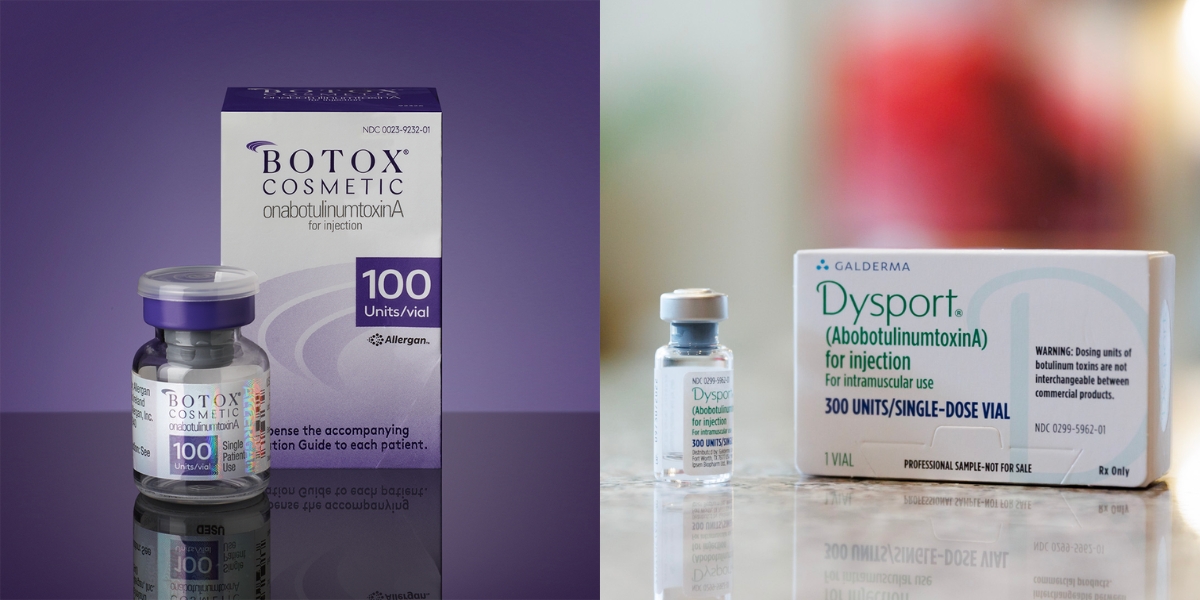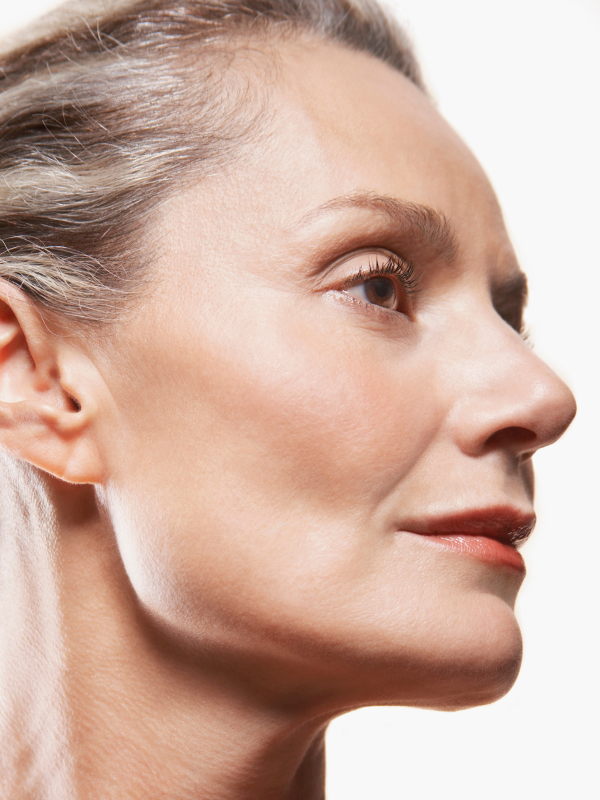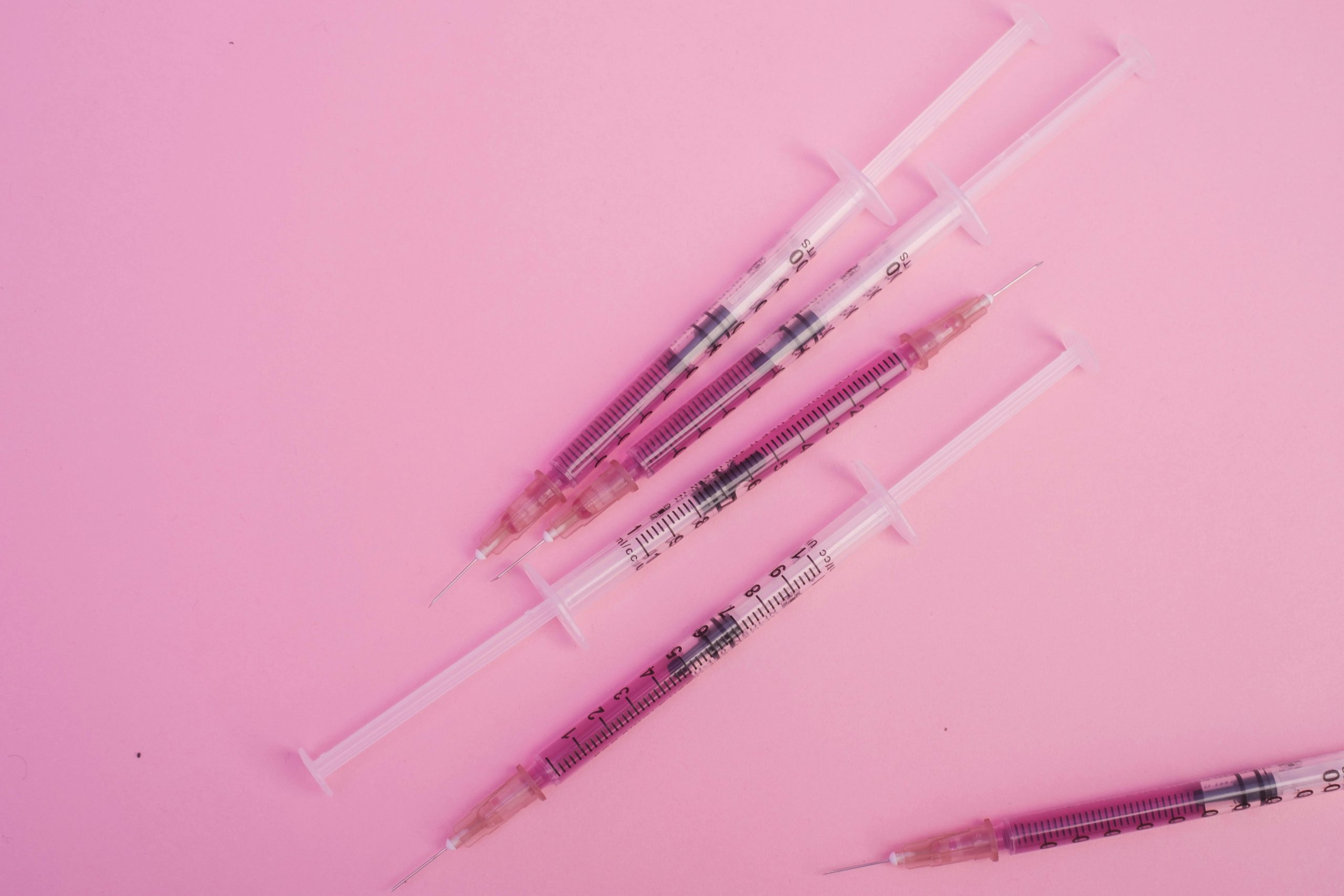Want to reduce the look of wrinkles but not sure if you should get Dysport or Botox? We’ve got you covered!
Before you schedule your appointment, it’s important to understand the differences between these two neurotoxins. While both Botox and Dysport treat wrinkles and fine lines, they differ in formulation, onset of action, diffusion, and dosage.
In Short: The Difference Between Dysport and Botox
Both Botox and Dysport are great for similar cosmetic and medical uses, but their unique properties might make one a better fit than the other for certain treatments.

| Dysport | Botox | |
| Common Treatment Areas | Forehead, Glabellar Lines, Crow’s Feet, Bunny Lines | Forehead, Glabellar Lines, Crow’s Feet, Bunny Lines |
| Time to See Results | 2-3 Days | 7-14 Days |
| How Long Does it Last? | 3-4 Months | 3-4 Months |
| Recovery Time | Minimal Downtime | Minimal Downtime |

What is Dysport?
What is Botox?
The Similarities Between Dysport and Botox
Both Dysport and Botox are injectable neurotoxins used to relax muscles and reduce wrinkles. These treatments last about 3-4 months, and require minimal to no downtime with results appearing just days after treatment.
Help to Reduce Wrinkles
Goodbye wrinkles! Dysport and Botox work by temporarily blocking nerve signals that cause muscle contractions, resulting in smoothing out facial lines in the forehead, eyebrow area, and crow’s feet.
The Injection Procedure
Quick and painless! Both treatments involve a series of injections administered directly into targeted facial muscles using a fine needle. The number of injections and amount of product used depend on the treatment area and the patient’s customized treatment plan. Most patients report having very minimal pain during this treatment but if you’re worried, your provider can apply a topical numbing agent prior to your treatment.
The Side Effects
While Dysport and Botox have some differences in formulation and diffusion properties, their side effect profiles are quite similar. Common side effects of these neurotoxins include pain at the injection site, headache, flu-like symptoms, dry mouth, and muscle weakness. Most of these are mild and temporary but you should always discuss any concerns with your provider prior to being treated.
How Long The Treatments Last
While Dysport and Botox treatments only take minutes to complete, effects last 3-4 months! The duration can vary based on the body’s natural process of nerve regeneration and protein turnover but most patients can expect their results to last within this timeframe. Regular maintenance is recommended to keep your skin smooth and wrinkle-free long term.

The Differences Between Dysport and Botox
Still can’t decide between Dysport and Botox? Let’s dive into the differences between these two treatments so you can better understand which treatment is right for you.
The Brand and Manufacturer
Dysport and Botox are manufactured by Ipsen and Allergan, respectively, using highly controlled and specialized processes to produce and purify botulinum toxin type A. Despite differences in their manufacturing techniques and formulations, both Dysport and Botox meet the highest standards of safety and efficacy for their intended uses.
How Long it Takes to See Results
One of the biggest differences between Dysport and Botox? How quickly patients see results! With Dysport, patients typically start to see results within 2-3 days after their treatment. On the other hand, Botox generally takes a bit longer to kick in, with most patients noticing results within 3-7 days after their treatment.

The Spread and Diffusion
Dysport vs. Botox Cost
Dysport vs. Botox for Different Treatment Areas
Dysport, known for its slightly greater diffusion and spread from the injection site, is often preferred for larger treatment areas such as the forehead or around the eyes where broader coverage is beneficial. Botox is ideal for targeting smaller or specific areas like fine lines around the eyes (crow’s feet) or frown lines between the eyebrows (glabellar lines).
Dysport vs. Botox for Glabellar Lines
Botox is typically considered the most effective treatment for glabellar lines (vertical frown lines between the eyebrows). Its formulation and localized action allow for precise targeting of the muscles responsible for creating these wrinkles, resulting in smooth, youthful skin in the treated area.
Dysport vs. Botox for Forehead Wrinkles
Dysport is often considered highly effective for treating forehead wrinkles due to its ability to diffuse and spread across larger areas, providing comprehensive coverage and smoothing of those deep wrinkles in the forehead region that we all hope to get rid of!
Dysport vs. Botox for Masseter Muscle
Dysport is typically more effective for treating the masseter muscle due to its broader spread and diffusion from the injection site, effectively reducing muscle activity and slimming the jawline.

Dysport Units vs Botox Units: What is the Difference?
Dysport and Botox are measured in different units, which can lead to some confusion when comparing dosages. Dysport units are referred to as “Dysport units,” while Botox units are just called “units.” The actual amount of neurotoxin administered in a single unit of either product can differ slightly due to variations in their formulations. At The Skin Center, for example, the potency of Dysport is considered to be about three times greater than that of Botox. Therefore, a dose of 20 units of Botox is approximately equivalent to 60 units of Dysport to achieve a similar effect. This means that treatment comparisons and adjustments between the two neurotoxins require careful consideration of these unit differences to ensure accurate dosing and outcomes.

The Pros and Cons of Dysport
The Advantages of Dysport
- Faster Onset: Results are often seen faster with Dysport compared to Botox, with some patients noticing improvements within 2-3 days after treatment.
- Broader Diffusion: Due to its slightly thinner formulation and smaller protein load, Dysport has a greater diffusion capability from the injection site. This allows it to spread more evenly across larger treatment areas.
- Natural-Looking Results: Dysport is known for producing natural-looking results by effectively smoothing wrinkles without compromising facial expressions. Its ability to target specific muscles allows for precise control over facial movements, resulting in subtle yet noticeable improvements.
- Longevity of Results: While individual results may vary, Dysport generally provides lasting effects for about 3-4 months, similar to Botox. Regular maintenance treatments can help sustain a smooth and youthful appearance over time.

The Downsides of Dysport
- Diffusion and Spread: Dysport’s greater diffusion and spread from the injection site can be a disadvantage when precise localization is needed, as it may affect nearby muscles unintentionally, leading to temporary side effects like eyelid drooping or asymmetry.
- Variable Dosage Conversion: The conversion ratio between Dysport and Botox units isn’t always straightforward and can vary between patients.
- Quicker Onset: While a faster onset is often seen as an advantage, it can also be a downside for some patients who prefer a more gradual transition in appearance after treatment.
- Less Predictable Efficacy: Some individuals may find that Dysport’s effectiveness varies compared to Botox, especially if they have developed a tolerance to one type of botulinum toxin and switch to the other.

The Pros and Cons of Botox
The Advantages of Botox
- Effective Wrinkle Reduction: Botox is highly effective in smoothing out fine lines and wrinkles caused by repetitive muscle contractions.
- Localized Treatment: Botox’s formulation allows for precise targeting of specific muscles responsible for wrinkles, ensuring focused treatment with minimal impact on surrounding areas.
- Gradual Onset: While Dysport has a quicker onset, Botox offers a more gradual transition in appearance post-treatment, which some patients prefer for achieving subtle, natural-looking results over a few days.
- Long-Lasting Results: Botox typically provides results that last for about 3-4 months on average, depending on individual metabolism and treatment area. Regular maintenance injections can help sustain a smoother, youthful appearance over time.
- Proven Safety Profile: Botox has been extensively studied and used for decades with a well-established safety profile when administered by qualified healthcare professionals. Its efficacy and safety in cosmetic and medical applications have contributed to its widespread popularity and trust among patients and providers alike.
The Downsides of Botox
- Temporary Results: Patients need regular maintenance treatments to sustain results, which can be perceived as a downside for those seeking long-term solutions.
- Possible Side Effects: While uncommon, Botox injections can cause temporary side effects such as bruising, swelling, headache, or flu-like symptoms.
- Localized Application Limitations: While Botox’s precise application is generally an advantage, it can be limiting for treating larger areas or muscles where a broader diffusion like Dysport might be more effective.
- Potential Resistance: Over time, some individuals may develop a resistance to Botox, where the effectiveness of the treatment diminishes. This can occur if antibodies develop against the botulinum toxin, reducing its efficacy and requiring alternative treatments or adjustments in dosage.

Conclusion: Which is Better?
Botox FAQs
Is Dysport better than Botox?
No treatment is better than the other! Choosing between Dysport and Botox totally depends on the patient’s preference and treatment goals.
Does Botox or Dysport last longer?
Both treatments typically last between 3-4 months.
Why do people choose Dysport over Botox?
People may choose Dysport over Botox for its potential faster onset and broader diffusion.
Does Dysport or Botox look more natural?
Both Dysport and Botox can achieve natural-looking results when administered properly by a skilled provider!
Which is safer out of Dysport and Botox?
Both Dysport and Botox are considered safe when administered by qualified professionals. As always, there are potential risks associated with these treatments so be sure to consult with your provider.
